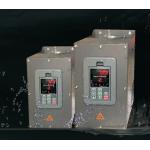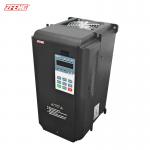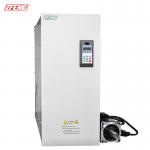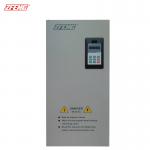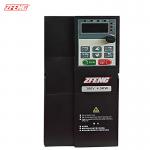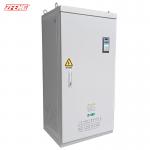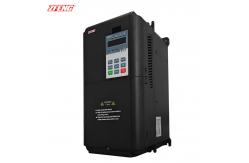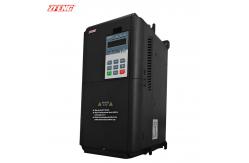ZFeng 900 Series 110Kw-T-G General Vector Variable Frequency Drive Working Principle- Rectification process: The frequency converter first converts the
input AC power (usually 50Hz or 60Hz power frequency) into DC power
through a rectifier. This process utilizes the unidirectional
conductivity of rectifier diodes.
- Filtering process: The rectified DC power may contain pulsating
components, so it needs to be smoothed through a filtering circuit
to remove the pulsation in the power supply and obtain a stable DC
power supply.
- Inverter stage: The filtered DC power is then converted into AC
power with adjustable frequency and voltage through an inverter.
The inverter is mainly composed of IGBT (Insulated Gate Bipolar
Transistor), which can achieve precise control of the output power
frequency and voltage by controlling the switching state of IGBT.
- Control circuit: The control circuit is the core part of the
frequency converter, including the main control circuit, signal
detection circuit, drive circuit, external interface circuit, and
protection circuit. It is responsible for receiving external
instructions, detecting the operating status of the motor, and
outputting control signals to the inverter based on this
information to achieve precise control of the motor.
FEATURES - Vector control technology: Vector control technology is an advanced
motor control method that can decompose the stator current of the
motor into two components: excitation current and torque current,
and control them separately. This technology can achieve
high-precision speed regulation and fast response of motors.
- Direct Torque Control (DTC): DTC technology directly analyzes the
mathematical model of an AC motor in the stator coordinate system,
while controlling the motor's magnetic flux and torque. It abandons
the complex calculations in vector control and has faster response
speed and higher control accuracy.
- Matrix AC-AC frequency conversion: Matrix AC-AC frequency
conversion technology eliminates the intermediate DC link and
directly converts AC power to AC power through frequency
conversion. It has the advantages of a power factor of 1, a sine
input current, and the ability to operate in four quadrants.
Application
Frequency converters are widely used in various industries such as
power, public works, textiles and chemical fibers, building
materials, petroleum, chemical, food and beverage, tobacco, coal,
and mechanical processing. In these industries, frequency
converters play an important role in energy-saving speed
regulation, torque control, position control, etc., providing
strong support for the production efficiency and energy utilization
efficiency of enterprises.
|
